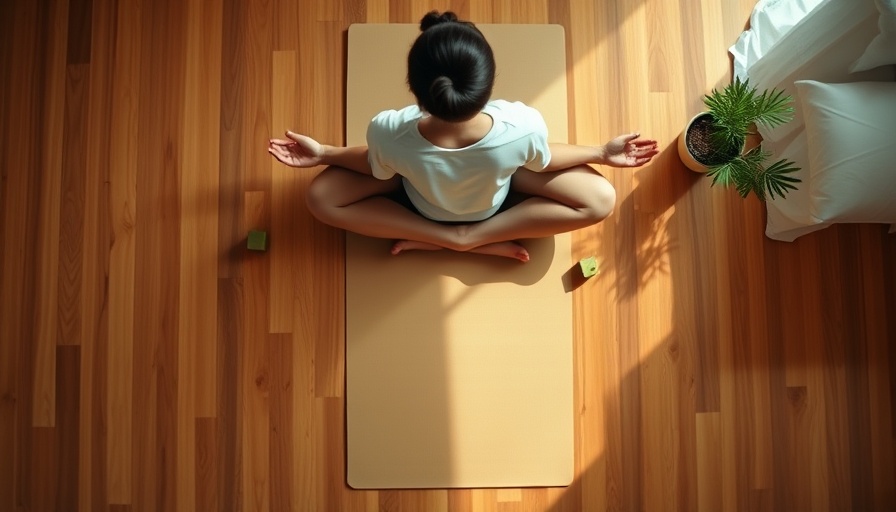
Unlocking Mindfulness: The Power of a Daily Practice
Are you feeling overwhelmed by the demands of modern life? With constant notifications and busy schedules, it’s no wonder many adults crave moments of tranquility. Mindfulness meditation offers a way to reclaim calm and focus, providing benefits that ripple through all areas of life. The Garrison Institute outlines ten essential steps to help you start your own mindfulness meditation practice, laying the foundation for a journey towards improved mental well-being and emotional resilience.
1. Create Dedicated Time and Space
Establishing a consistent practice begins with finding a suitable environment. Choose a quiet place free from distractions where you can dedicate yourself to mindfulness meditation. Setting aside dedicated time, ideally the same time each day, helps to create a routine that fosters commitment.
2. Take Advantage of a Timer
When starting out, it can be beneficial to keep the practice short. Begin with just five minutes to avoid feeling overwhelmed, gradually increasing to 15-40 minutes as your comfort level grows. This approach ensures that meditation remains a positive experience, encouraging consistency.
3. Find Your Comfort Zone
Choosing a comfortable sitting position is crucial for a successful mindfulness session. Whether sitting cross-legged on the floor or in a chair with your feet flat on the ground, your practice should cater to your body’s needs. If you face mobility issues or discomfort, feel empowered to adjust your posture accordingly.
4. Mindful Posture Matters
Good posture can enhance your meditation experience. Sit up straight with your hands resting comfortably, and keep your neck elongated. Relax your shoulders as you close your eyes gently or use a soft gaze ahead. This attentive positioning optimizes your relaxation and focus.
5. Breathing: Your Anchor
The breath acts as a focal point of mindfulness. Take a deep breath to initiate your practice, allowing your body to settle and your nervous system to relax. Pay attention to where you feel your breath most prominently — whether in the nostrils, chest, or abdomen — and keep your focus there.
6. Direct Your Attention
In mindfulness practice, maintaining attention on the breath is paramount. It’s natural for thoughts to pop up during meditation. When distractions arise, visualize them as floating clouds that pass by, gently guiding your focus back to the breath each time.
7. Consistency is Key
Don’t be discouraged if your mind wanders; it’s part of the process. Like weights in a gym build physical strength through repetition, returning your attention to your breath strengthens your mental focus over time. This practice helps cultivate a lasting sense of awareness.
8. Practice Self-Kindness
Meditation can sometimes induce frustration, especially when focus drifts. Be kind to yourself through the process. Should you find it difficult to concentrate or if you fall asleep, adjust your posture or blink your eyes open slightly, keeping yourself engaged with the practice.
9. Transition Responsively
When your timer rings, slowly open your eyes and take a moment to acknowledge your practice. Enjoy feelings of gratitude for this time you’ve invested in yourself. Preparing for this transition helps integrate mindfulness into your daily routine.
10. Enhance Your Journey
For those seeking to deepen their mindfulness practice, explore additional resources. The Mindful website offers a wealth of articles and courses tailored to various aspects of mindfulness and meditation. Connecting with a community can further enrich your mindfulness experience.
Common Questions and Support for New Practitioners
Often, new practitioners may feel daunted by the idea of meditation. You aren’t alone; many people share concerns over their inability to focus or the fear of doing it “wrong.” Engaging with guided meditations or joining local practice groups can offer encouragement and support, making the initial stages of meditation less intimidating.
In our fast-paced society, the mindfulness approach signifies an essential shift towards self-care and mental clarity. With these 10 steps, incorporating mindfulness meditation into your daily life can help cultivate a better sense of well-being and resilience. Start your journey today; you deserve the peace and clarity that mindfulness can bring!
 Add Row
Add Row  Add
Add 




Write A Comment